
A quick event where we talked to the rest of the class and pick our teammates, with whom we would be collaborating on the HCI project for the rest of the semester.
My role
Given the wide "Quantified campus" as a topic, we had to pick a problem space, and, we thought, "Hey, space!" (No, it was more complicated than that.) We looked through user groups and departments on campus we could target with our solution.
Choosing problems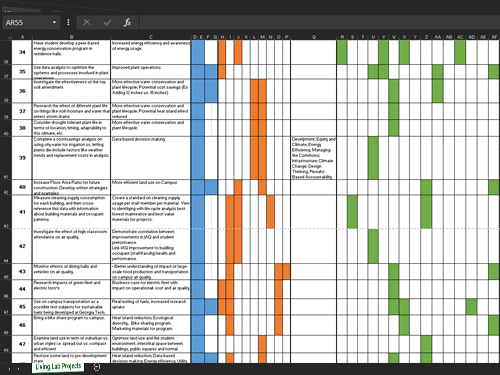
We met with Jessica Rose from Facilities management after a brief email correspondence, and she was kind enough to send us a HUGE list of problems they were hoping students would address in their projects.

Walked around the campus. Saw how some spaces were cramped. Saw how others weren't. Wondered why. Told ourselves we'd find out in the course of solving the problem.
Target users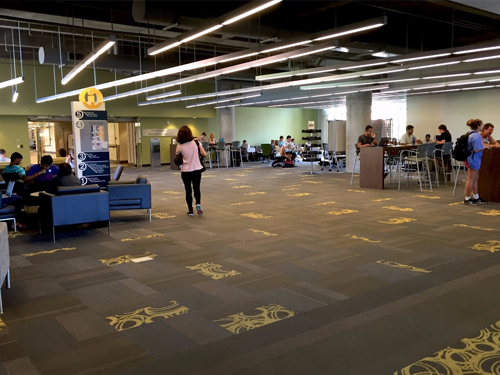
People don't always say what they do and don't always do what they say. So, we decided to observe what they do and hear what they say.
View Samples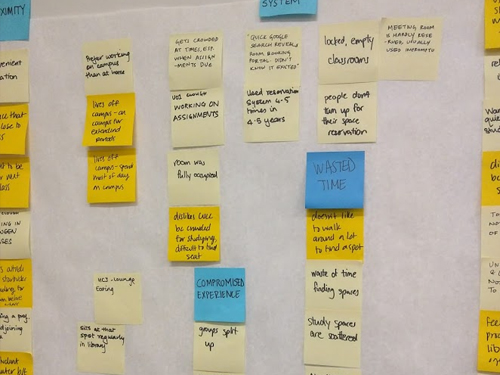
Because we all talked to different people in different settings, we needed to put our heads and post-its together to see different angles to our problem space.
View Affinity mapDo solutions already exist to some of these problems? Have people already thought of these things? We read some papers and websites. (Okay, to be fair, we did get some good ideas from these.)
We picked the tools we'd use on our poor subjects. And thought about why we were using them (Because we had to, duh!). And used them.
Research Methods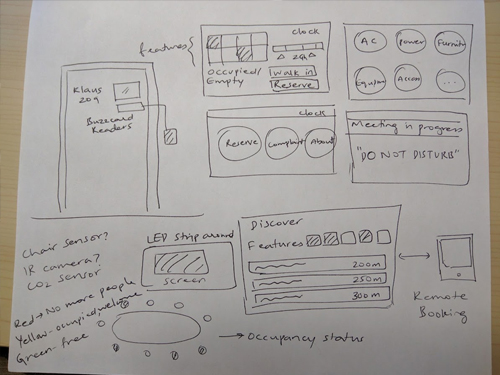
One of the best phases of solving a problem, according to me. When you have to come up with loads of solutions, you come across everything from obvious to downright crazy.
View Sketches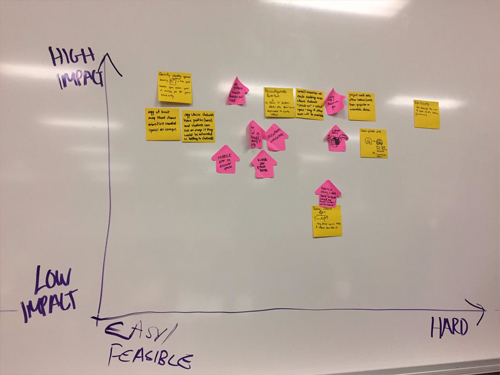
We just used the useful/feasible grid we learned about in the IBM design thinking workshop. Seriously, that grid is genius.
View feedback
Once we have some ideas, it's time to put it on paper, and no, not as an essay. We draw, we sketch, we discard. And what remains moves forward in the design pipeline.
View Prototypes
Here we see a bunch of imaginary people. Putting a face to a name helps us tailor the experience to a typical user of the system.
View Personas
Once we have a (sort of) solution in place, we go back to the research we did and find out if the proposed solution addresses the user needs (and yes, the problem space may change completely during the process)
View responses
We make a storyline of how the product is going to be used when deployed. Best way to do it? Comic strip.
View storyboards
For those of us who have been waiting to get our hands dirty and build the solution, the process before is a lesson in patience. Finally, after we align the solution to our user needs, we build a high fidelity prototype.
View video
We summon some guinea pigs to test our prototype, to see if it is indeed as simple and easy to use as we intended it to be. We record the user interaction for further analysis, we create documentation for the system and clean up code parallely.
View feedback
All said and done, there is a bit more saying to do. We document the whole process, put the data in a presentable format, and convey what we did to the world.
View video